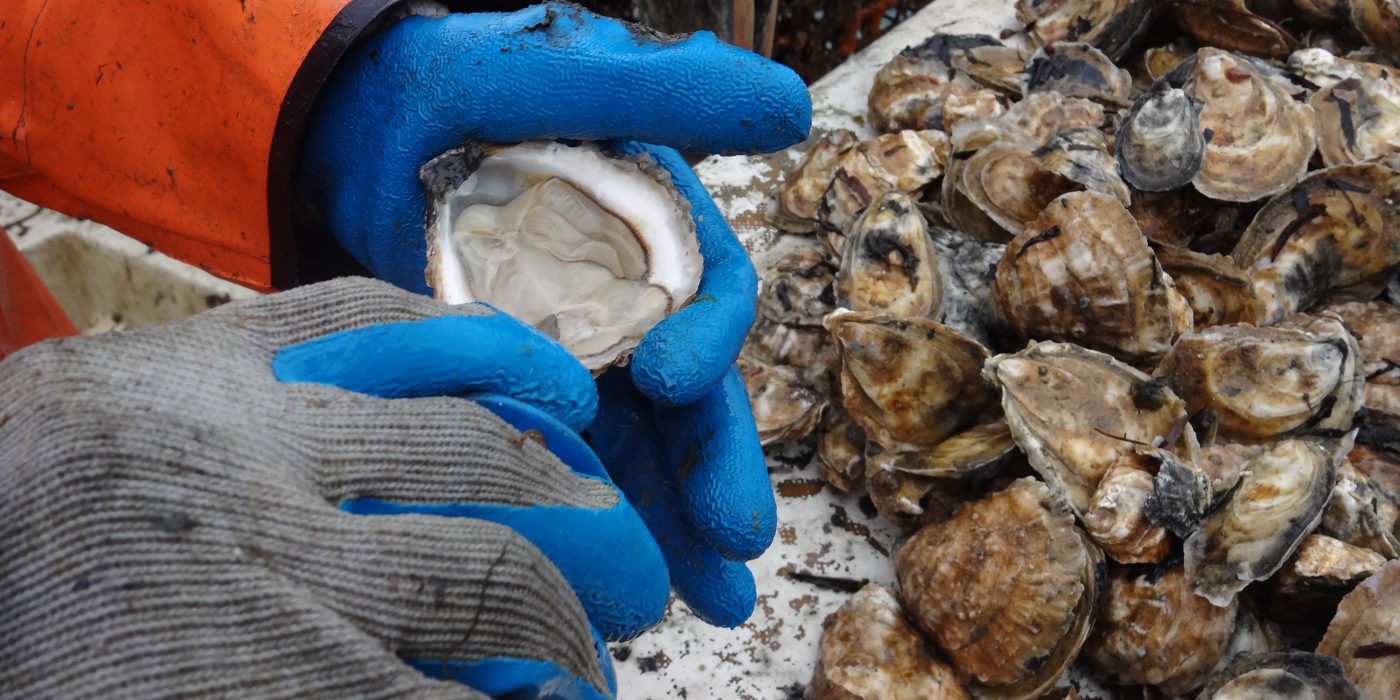Jonathan Swift once declared, “He was a bold man that first ate an oyster”, so we should raise a glass to that bold (and probably ravenous) man who discovered the joyous taste of the oyster. A vacation to Martha’s Vineyard provides opportunity for the (over)eating of these aesthetically challenged mollusks farmed right here on the shores of this beautiful isle.
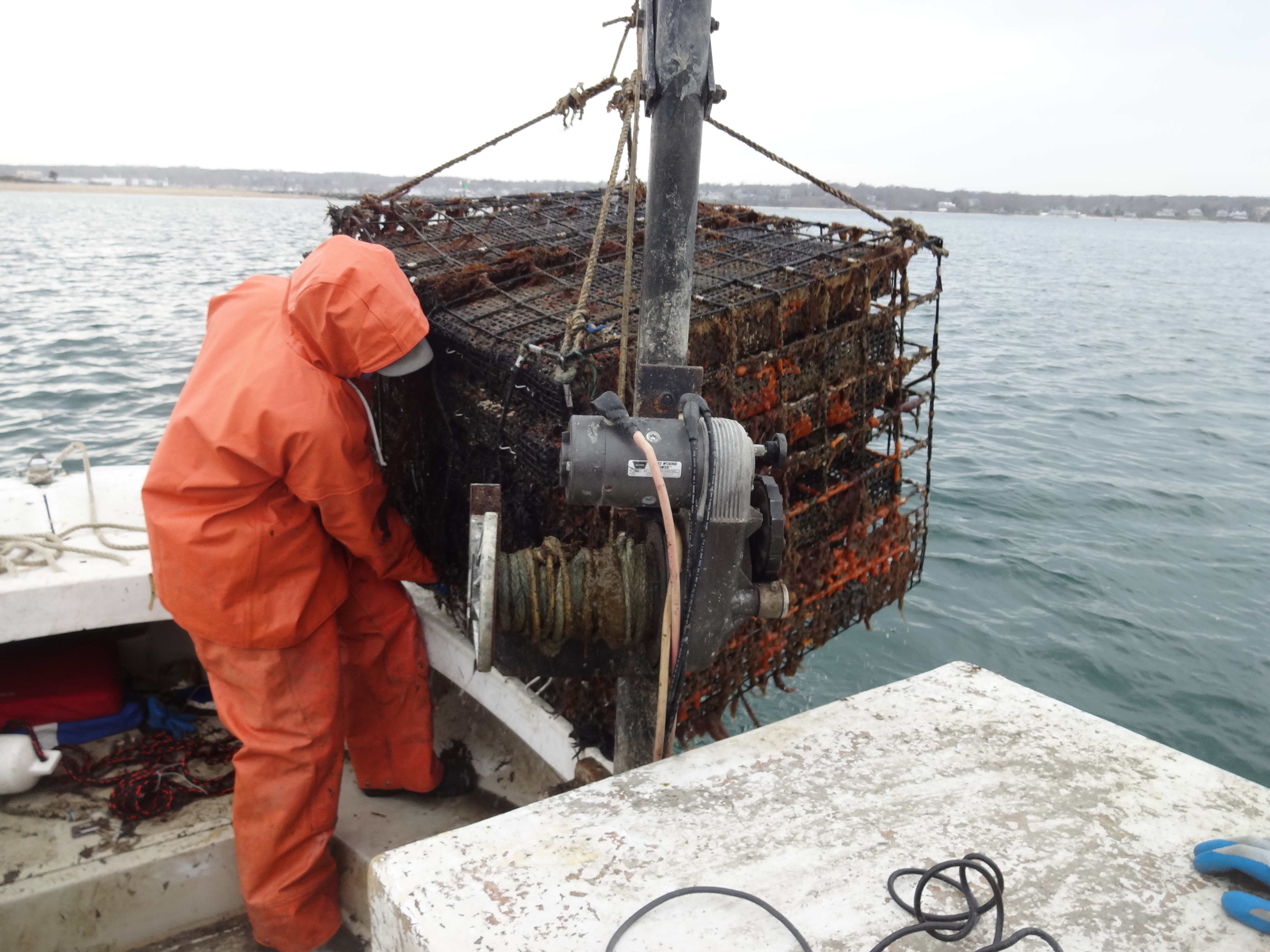
It wasn’t that long ago that wild oyster reefs stretched up the Eastern seaboard from Chesapeake Bay to Canada. So abundant were they that navigation charts marked the location of the oyster reefs in order to save vessels from an unexpected collision. Unfortunately over-fishing, pollution and development wiped out most areas for wild oysters. However in recent years there has been a surge in the growth of aquaculture and farming of oysters. This is part of the growing trend of seeking sustainability and shifting emphasis away from a “hunting” approach such as fishing to a “farming” approach that guards against stock and species depletion. Farming of oysters also absorbs carbon and cleans water. Oh yeah and they taste pretty darn good too!
For the successful growth of high-grade oysters you need a number of things to be present; cold waters to slow the oysters’ metabolism which helps give a sweeter taste; high salinity to give a sharper taste; fast-moving tides to increase the feeding of the beds; and clean water. It just so happens that these conditions are found in abundance on Martha’s Vineyard.
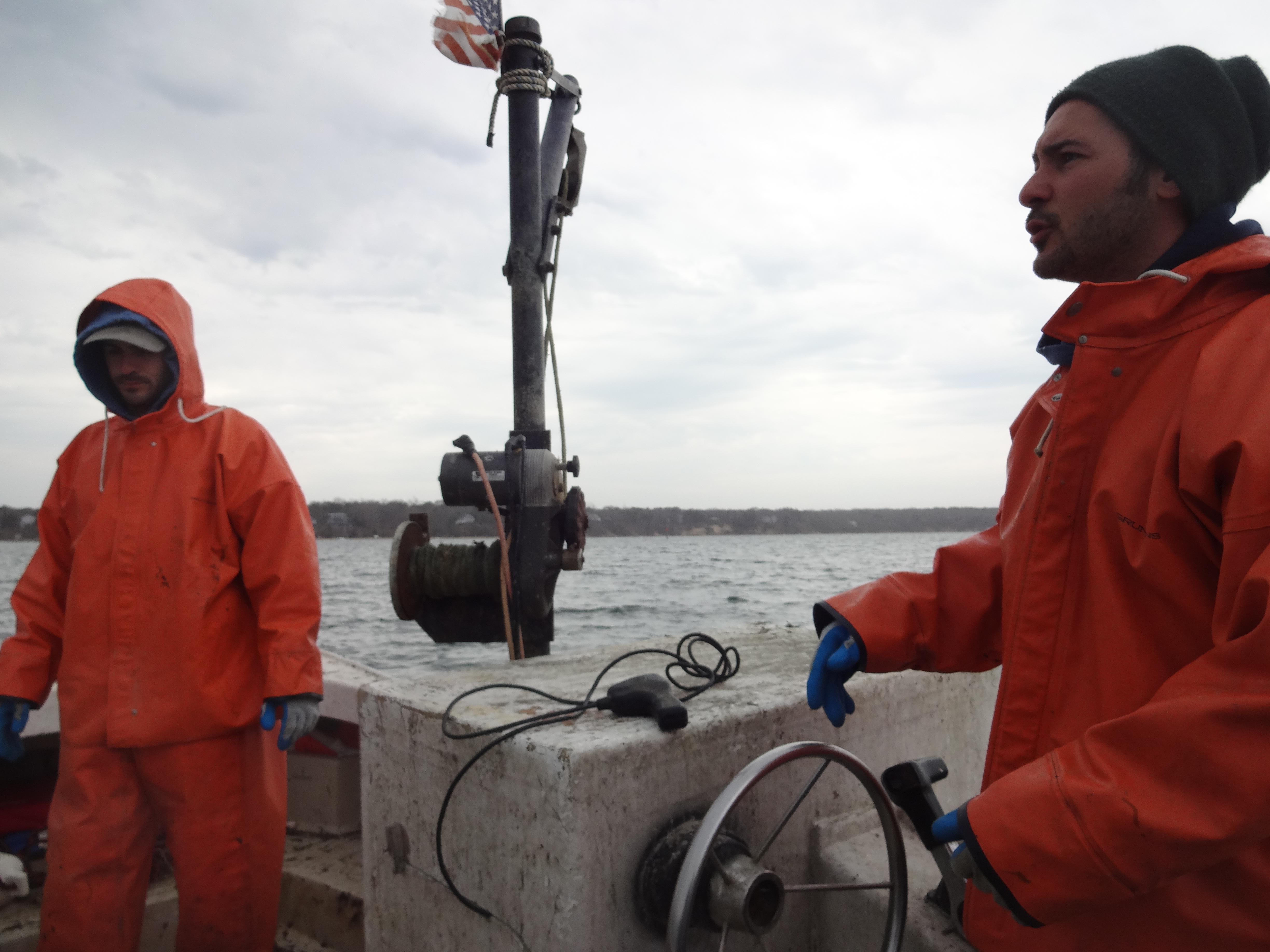
Brothers Dan and Greg Martino, who moved to the island 10 years ago, launched Cottage City Oysters in 2014 and quickly have earned a reputation for producing high quality oysters (and for giving the island’s most fun oyster farm tours!). Located just off Eastville Beach at the entrance to Vineyard Haven harbor they have a 2 acre farm producing oysters and kelp. The farm sits outside the lagoon and is unique as it is the only open sea farm in New England. Being an open sea farm has advantages and disadvantages. On the negative side it leaves the farm exposed to the vagaries of New England’s weather (not so pleasant with all the pesky Nor’Easters this winter) where storms and high swells can topple the cages. Also water temperatures are lower meaning growing times are longer (typically 3 years). On the positive side the cages remain under water at all phases of the tide avoiding the stress that the oysters experience if they are exposed to air and they have higher salinity which wards off disease.
The oysters start off as seeds which are provided from a hatchery in Maine. Dan & Greg purchase 500,000 seeds each year. Each seed is placed by the hatchery on one grain of sand as the base on which it will grow. Initially grown in bags at a upweller nursery in Lagoon Pond the oysters are transferred to cages as soon as they are large enough. The cages are kept 25 feet under the water just outside the lagoon. The lagoon helps maintain the salt water and fresh water (brackish) mix that the oysters require. Each year they are moved to a bigger cage until they reach eating size. During the growth the oysters have their edges clipped in order to encourage more outward growth and with that a plumper oyster and to groom the perfect teardrop shape. Every time the cages and oysters are brought out of the water they are checked for any predators that may have wiggled their way uninvited into the cage. These could be oyster drills, which are snails that drill a hole through the shell and suck out the oyster, conch, lobster or crabs. As noted earlier the colder water means slower growth but also inhibits bacteria such as vibrio. Often when other oyster farms have to close down due to vibrio risk Cottage City can remain open.
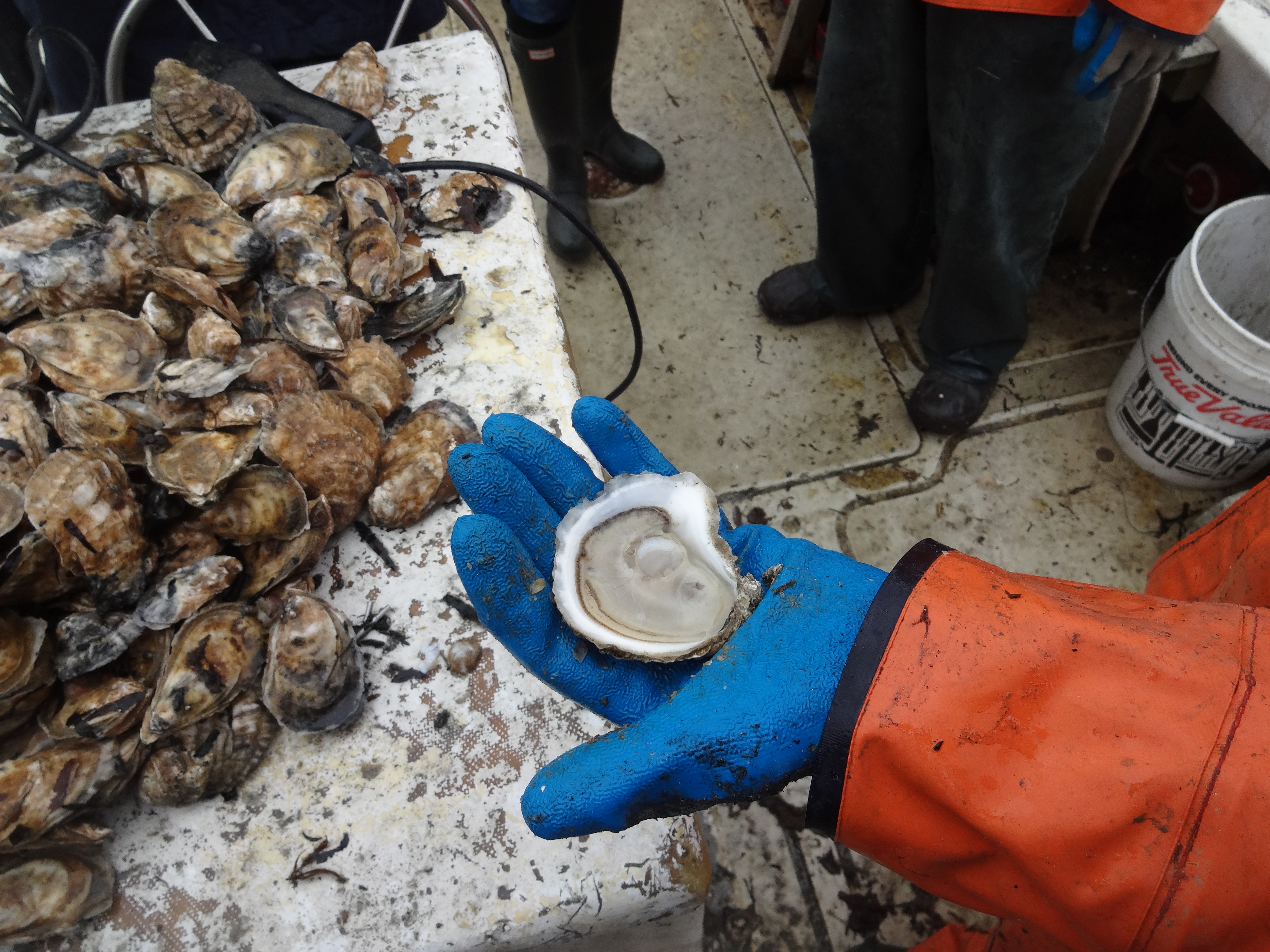
OK that’s enough about how it’s done, how about the taste?? Taste is all a “matter of taste”. Every oyster is a product of its environment and each location will have a different taste. It’s all about merroir. There’s no right taste, it’s simply what you prefer. Cottage City oysters have a wondrous salty, clean taste that evokes memories of the seaside and that taste of the ocean. The longer growth time also gives them sweetness and there are some that claim that as the area also includes a kelp farm that there is a subtle seaweed note. Too subtle for me I’m afraid but I’m often told I’m a peasant so what do I know.
The oysters once harvested are immediately put on ice and transferred to local markets and fish houses such as Net Result in Vineyard Haven. You can enjoy the Cottage City oysters at almost every island restaurant including Beach Road Restaurant, Net Result and 19 Raw in Edgartown. I thoroughly recommend eating them raw with a squeeze of lemon; simple, fresh and a true “taste of the ocean”.
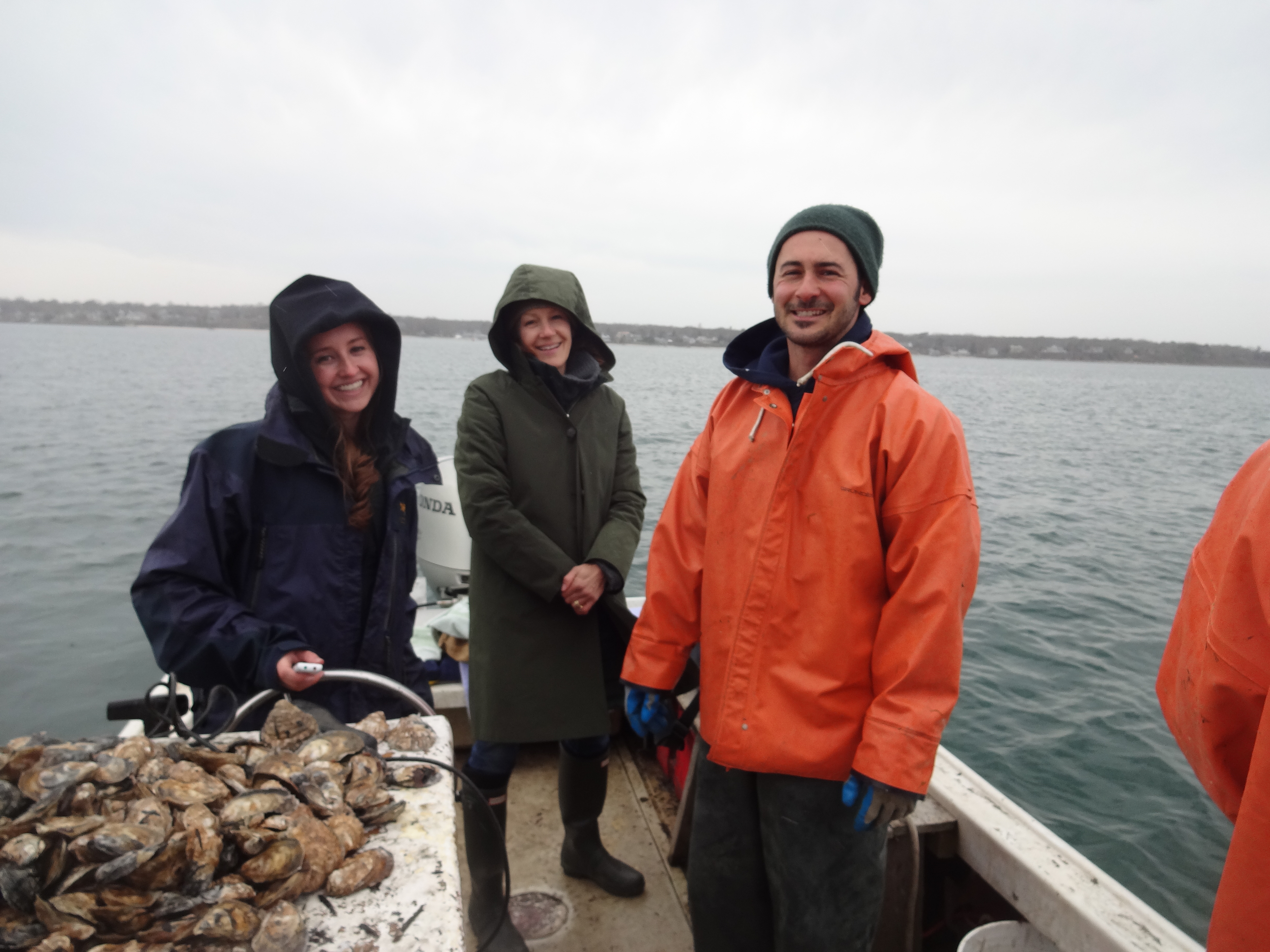
Greg & Dan told me that there are always free oysters for anyone who can swim out to the raft when they’re farming. Take heed this is not a short swim for those inclined, and remember you also have to swim back!
Cottage City Tours do two farms tours every week. Tours can be picked up at Vineyard Haven harbor close to the inn.
I was fortunate to have been invited along for this tour by Farm.Field.Sea and I send them a big thank you for sharing this awesome, truly local experience with me.
Safe travels,
Simon

 (508) 696-0859
(508) 696-0859


